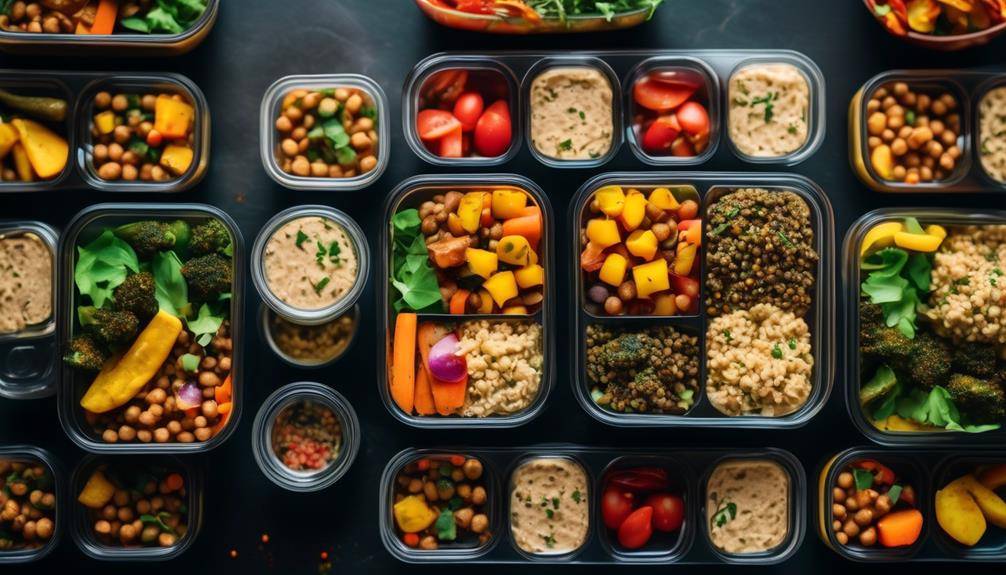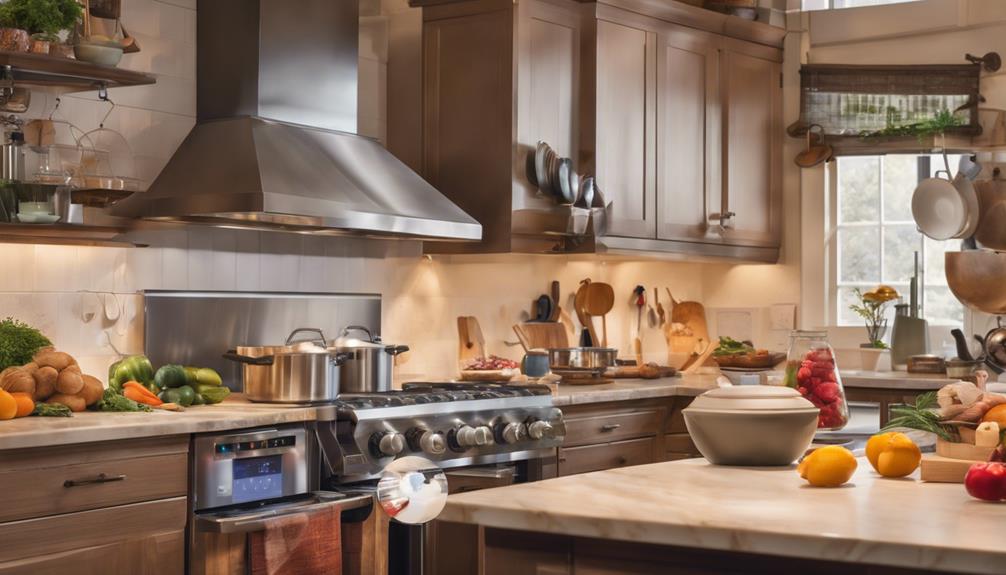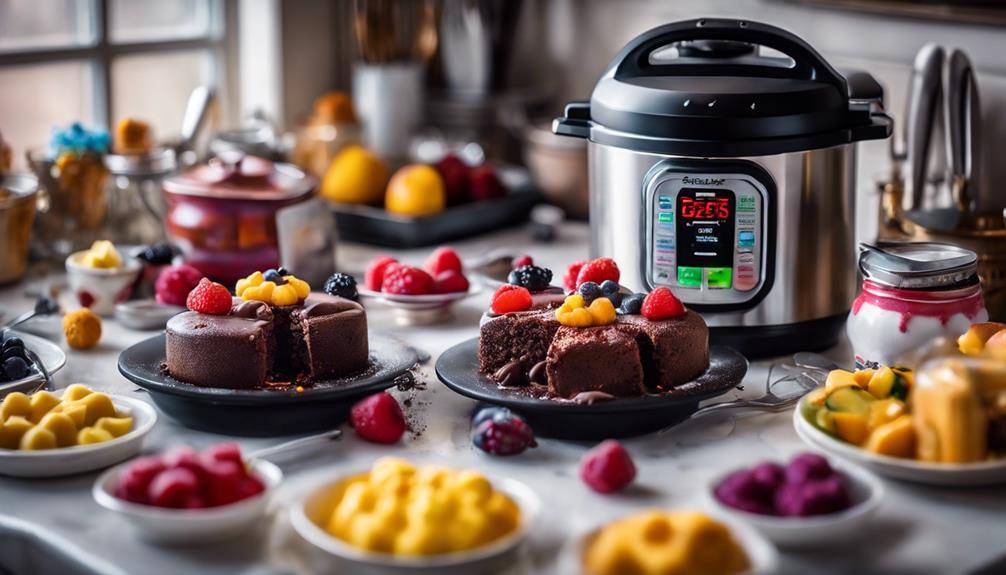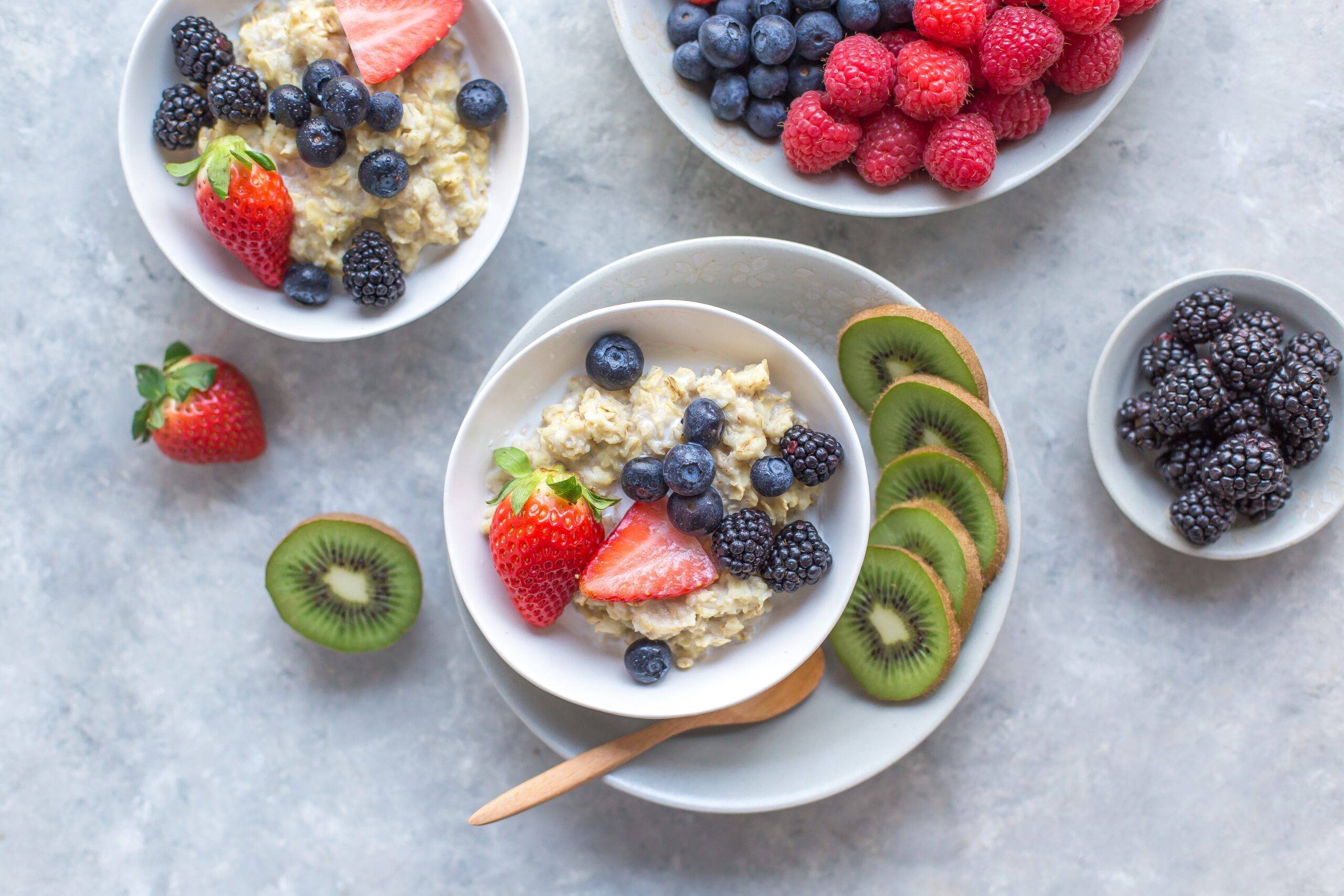How To Roast Sweet Potatoes
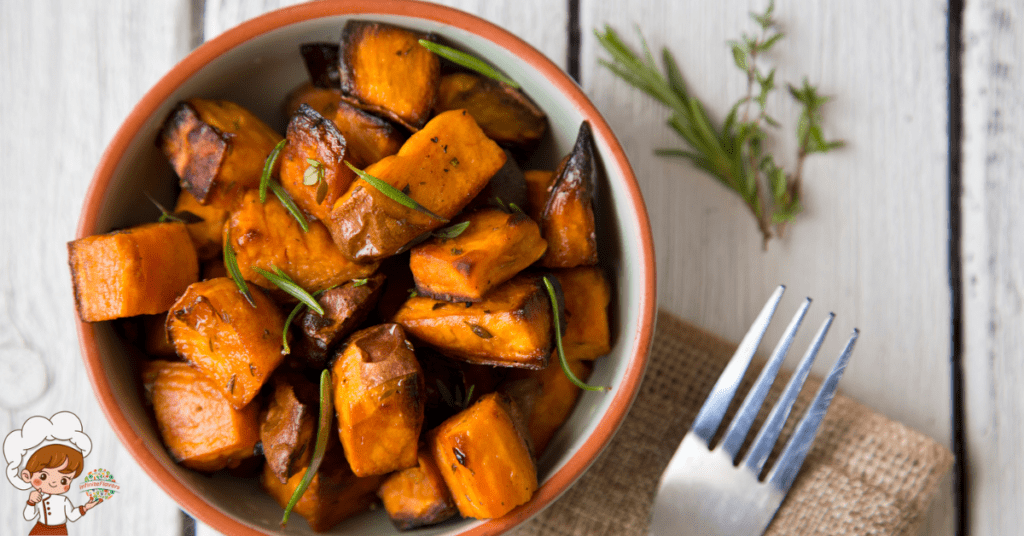
How To Roast Sweet Potatoes, start by selecting firm, smooth ones, preferably with deeper orange skin for more nutrients. Wash them well and decide whether to peel or leave the skin on. Cut them into even pieces for uniform roasting; soaking them in cold water for 30 minutes can enhance crispiness. Preheat your oven to 425°F (220°C) and toss the cut potatoes with olive oil, salt, and your favorite spices. Spread them in a single layer and roast for 25 to 35 minutes, flipping halfway. Enjoy their natural sweetness while discovering new ways to pair and serve them.
Choosing the Right Sweet Potatoes
When you’re picking sweet potatoes, how do you know which ones to choose? First, look for sweet potatoes that are firm and smooth. Avoid any with soft spots, wrinkles, or blemishes. The skin should be intact without any cuts or dark patches. Generally, the deeper the orange color, the richer the nutritional benefits, as they’re packed with vitamins A and C, fiber, and antioxidants. Don’t overlook the smaller ones, as they often have a sweeter flavor and creamy texture when roasted.
Next, consider the variety. There are different types of sweet potatoes, but the most common are the orange-fleshed and purple-fleshed varieties. Each type has its unique taste and nutritional profile. Orange-fleshed varieties are typically sweeter, while purple ones have a nuttier flavor and are rich in anthocyanins, offering additional health benefits.
Once you’ve selected your sweet potatoes, think about storage tips. Store them in a cool, dark, and dry place, away from sunlight. A pantry or cellar is ideal. Avoid refrigerating them, as cold temperatures can alter their flavor and texture. Keep them in a breathable bag or basket to guarantee good air circulation.
Preparing Sweet Potatoes for Roasting
To prepare sweet potatoes for roasting, start by giving them a good wash under running water. This simple washing technique removes dirt and any pesticides lingering on the skin. Make certain to scrub them gently with a vegetable brush to get into any crevices. Once they’re clean, it’s time to decide how you want to peel them. There are a couple of peeling methods you can use. If you prefer a smoother texture, you can peel them with a vegetable peeler, removing the skin entirely. However, if you’d like to retain some nutrients and add a bit of texture, you can leave the skin on.
If you choose to peel, make certain to do so over a bowl to catch any scraps. After peeling, rinse the sweet potatoes again to remove any leftover bits of skin. Now, cut them into even-sized pieces to guarantee they roast evenly. Whether you opt for cubes, wedges, or rounds, uniformity is key here.
It’s also helpful to soak the cut pieces in cold water for about 30 minutes if you want to get rid of excess starch, which can help them become crispier during roasting. After soaking, drain and pat them dry with a paper towel to remove any moisture. With your sweet potatoes prepped and ready, you can move on to the next step in the roasting process.
Seasoning Techniques for Flavor
Seasoning sweet potatoes is often the key to elevating their natural sweetness and creating a delicious dish. To start, consider using a variety of herb blends and spice combinations that complement the sweet potato’s flavor. A simple yet effective approach is to toss your cubed or sliced sweet potatoes with olive oil, salt, and pepper. This basic seasoning lays the groundwork for more complex layers of flavor.
If you’re looking for something bolder, experiment with herb blends like rosemary, thyme, or sage. These herbs add an earthy richness that balances the sweetness. You can also try a blend of garlic powder and onion powder for a savory kick. When it comes to spices, cinnamon and nutmeg work wonders, bringing out the sweet notes of the potatoes. For a touch of heat, consider adding cayenne or smoked paprika.
Don’t shy away from sweetening things up, either! A drizzle of maple syrup or honey can enhance the caramelization during roasting, giving your sweet potatoes a delightful glaze. For a Middle Eastern twist, sprinkle some za’atar or cumin.
Optimal Roasting Temperature and Time
Achieving perfectly roasted sweet potatoes hinges on the right temperature and timing. For the best results, preheat your oven to 425°F (220°C). This temperature strikes a balance that allows the sweet potatoes to cook through while developing a deliciously caramelized exterior. If you want to explore different roasting methods, keep in mind that lower temperatures, like 375°F (190°C), may yield softer potatoes but won’t enhance the flavor as much.
Once your oven reaches the desired temperature, spread the seasoned sweet potatoes in a single layer on a baking sheet. This step is essential; overcrowding can lead to steaming rather than roasting, which diminishes flavor enhancement. Roast them for about 25 to 35 minutes, flipping halfway through to guarantee even cooking. The timing can vary depending on the size of your sweet potato pieces. Larger chunks may take longer, while smaller ones will cook more quickly.
To check for doneness, pierce a piece with a fork. If it slides in easily, you’ve got perfectly roasted sweet potatoes. Remember, the aim here is to achieve that tender inside and a crispy, caramelized outside. Keeping a close eye during the final minutes will help you avoid overcooking, which can result in a mushy texture. By mastering ideal roasting temperature and time, you’ll reveal the full potential of sweet potatoes, turning them into a flavorful side dish that complements any meal.
Tips for Achieving Perfect Texture
To get that perfect texture in your roasted sweet potatoes, start by choosing the right variety—some are creamier than others. You’ll also want to pay attention to the cooking temperature and how you cut the potatoes for even roasting. These factors can make all the difference in achieving a deliciously tender and crispy result.
Choosing the Right Variety
Selecting the right variety of sweet potato is essential for achieving that perfect roasted texture. You’ll find that there are several types, each offering unique flavors and textures. The most popular varieties include the orange-fleshed Beauregard, known for its sweetness and creamy texture, and the purple-fleshed Okinawan, which has a nuttier flavor and is packed with antioxidants.
When you choose a variety, consider its culinary uses. For instance, Beauregard works wonderfully in savory dishes or desserts due to its natural sweetness. On the other hand, if you want a more earthy taste, the Japanese sweet potato, with its pale yellow flesh, is a great option.
Don’t forget about the health benefits! Sweet potatoes are rich in vitamins A and C, fiber, and potassium, making them a nutritious addition to your meals. By selecting the right variety, you’ll not only enhance the flavor of your dish but also maximize the health benefits. So, take a moment to explore different types of sweet potatoes at your local market, and you’ll be on your way to achieving that ideal roasted texture in no time!
Optimal Cooking Temperature
Cooking sweet potatoes at the right temperature can make all the difference in achieving that perfect roasted texture you’re aiming for. For best results, preheat your oven to 425°F (220°C). This temperature allows the sweet potatoes to caramelize beautifully while retaining their natural sweetness. If you go too low, like 350°F (175°C), the sweet potatoes may cook too slowly, resulting in a mushy texture rather than the desired crispy edges.
Using proper roasting methods is key. Toss your sweet potato pieces in a bit of oil and seasoning before spreading them evenly on a baking sheet. Make sure they’re not overcrowded; this guarantees even cooking and browning. Roasting at 425°F enhances the health benefits of sweet potatoes, as it preserves more nutrients compared to boiling or steaming.
Keep an eye on them; typically, they’ll need about 25-30 minutes. You can give them a stir halfway through to guarantee they roast evenly. With this temperature and technique, you’ll achieve perfectly tender insides with that delicious, caramelized exterior that elevates your dish. Enjoy the delightful balance of flavor and health benefits with every bite!
Cutting Techniques for Evenness
Achieving perfect texture when roasting sweet potatoes starts with how you cut them. To guarantee even cooking, you’ll want to focus on consistent slicing shapes. Whether you choose wedges, cubes, or rounds, aim for uniform sizes—about one-inch thick is ideal. This allows all pieces to roast at the same rate, preventing some from becoming mushy while others remain undercooked.
Your knife skills play an essential role here. A sharp knife will make clean cuts and reduce the risk of crushing the sweet potatoes, which can lead to uneven textures. If you’re using a dull knife, you may end up with ragged edges that don’t roast well.
Take your time when cutting, and don’t rush the process. If you find it challenging to achieve even slices, consider using a mandoline slicer for uniformity.
Lastly, remember to soak your sliced sweet potatoes in cold water for about 30 minutes if you want to enhance their crispiness. This step can help remove excess starch, resulting in a delightful texture once roasted. With these cutting techniques, you’ll be well on your way to perfectly roasted sweet potatoes!
Serving Suggestions and Pairings
When it comes to serving roasted sweet potatoes, there are countless delicious ways to enhance their natural sweetness and earthy flavor. One great option is to toss them into vibrant sweet potato salads, mixing in greens, nuts, and a zesty vinaigrette for a rejuvenating meal. You can also create roasted veggie bowls by layering your sweet potatoes with other roasted vegetables, grains, and a protein of your choice.
For a fun twist, try making sweet potato tacos. Stuff corn tortillas with roasted sweet potatoes, black beans, avocado, and some fresh salsa for a flavorful, nutrient-packed meal. If you’re looking to elevate your dishes, consider various flavor pairings—think feta cheese, cilantro, or a sprinkle of chili powder.
Dipping sauces can also add an exciting element to your roasted sweet potatoes. A tangy yogurt sauce or spicy sriracha aioli works wonders for those who love a bit of kick. When you’re engaged in meal prep, roasted sweet potatoes are a fantastic addition; they store well in the fridge and can be easily reheated throughout the week.
Lastly, don’t forget about festive dishes! Incorporate roasted sweet potatoes into your holiday spread, pairing them with other seasonal vegetables for a colorful and nutritious side. No matter how you serve them, roasted sweet potatoes are sure to be a hit!
Frequently Asked Questions: How To Roast Sweet Potatoes
Can I Roast Sweet Potatoes With the Skin On?
Absolutely, you can roast sweet potatoes with the skin on! Different sweet potato varieties may yield various textures, so try various roasting techniques to find your favorite. The skin adds flavor and nutrients, enhancing your dish!
Are There Different Types of Sweet Potatoes?
Yes, there are several varieties available, like orange, purple, and white sweet potatoes. Each has unique flavors and nutritional differences, providing you with diverse options for your meals while boosting your diet with essential nutrients.
How Can I Store Leftover Roasted Sweet Potatoes?
To store leftover roasted sweet potatoes, place them in an airtight container. For best quality, refrigerate and consume within a few days. When reheating, consider using the oven or microwave for even warmth.
Can I Freeze Roasted Sweet Potatoes?
Yes, you can freeze roasted sweet potatoes! Use proper freezing techniques, like cooling them first and storing in airtight containers. This helps maintain flavor preservation, ensuring they taste great when you’re ready to enjoy them again.
What Are Common Health Benefits of Sweet Potatoes?
Sweet potatoes offer numerous health benefits. They’re nutrient-dense, packed with antioxidants that support heart health. Their fiber aids digestion, helps with weight management, and their low glycemic index stabilizes blood sugar levels, promoting overall wellness.
Conclusion
Roasting sweet potatoes is simple and rewarding! By selecting the right ones, prepping them well, and seasoning to your taste, you’ll create a delicious side dish. Remember to keep an eye on the oven temperature and cooking time for that perfect texture. Whether you serve them alongside proteins or toss them in a salad, your roasted sweet potatoes are sure to impress. So, gather your ingredients and enjoy a tasty treat that everyone will love!




